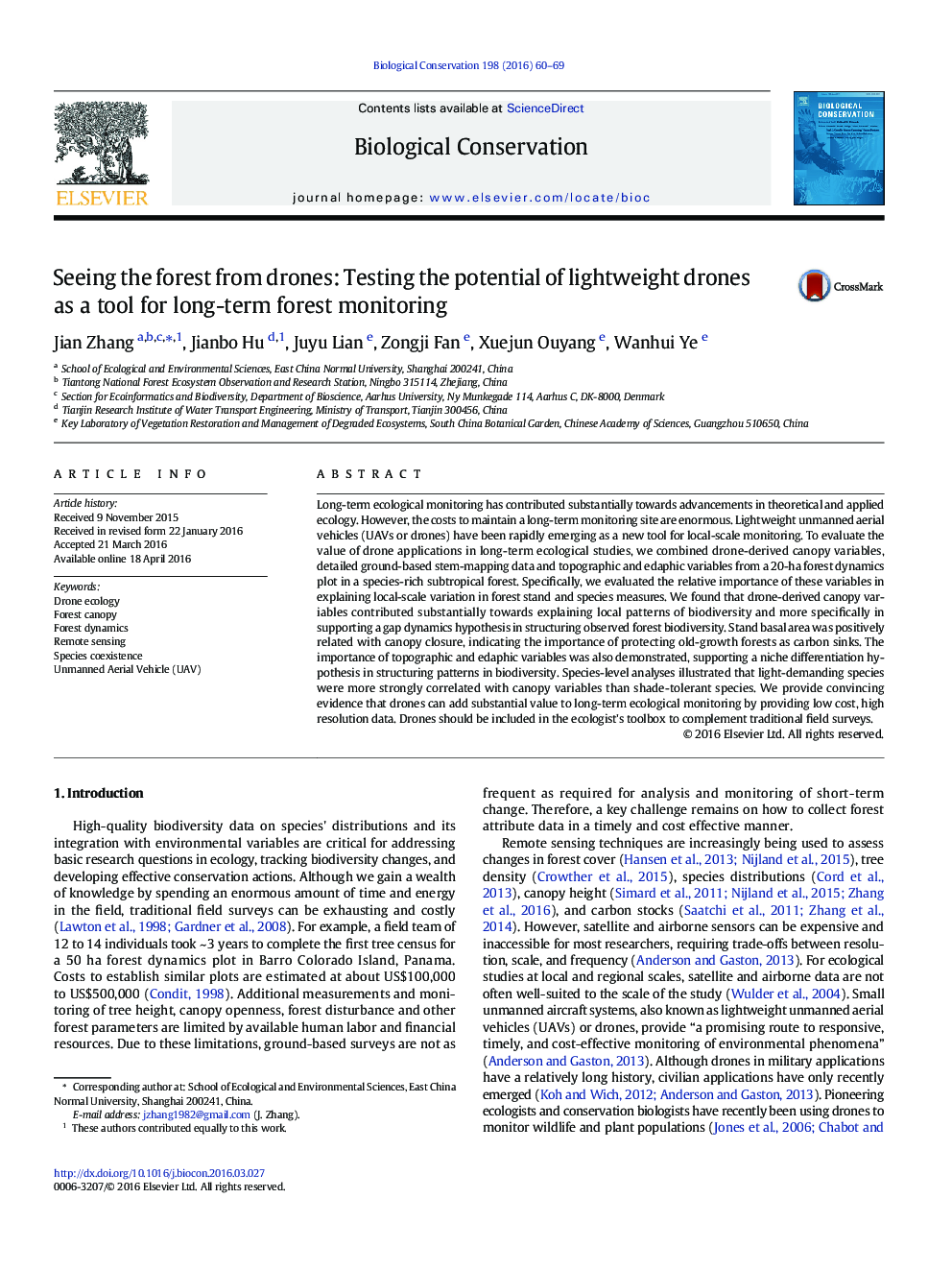| Article ID | Journal | Published Year | Pages | File Type |
|---|---|---|---|---|
| 4385016 | Biological Conservation | 2016 | 10 Pages |
•We used a lightweight drone to map in detail forest canopy structure across a 20-ha subtropical forest dynamics plot.•We examined the added benefit of incorporating drone-derived variables in explaining local variation in both stand and species measures.•Drone-derived canopy variables contributed substantially towards explaining spatial patterns in biodiversity.•Species with different light requirements responded to canopy variables supporting gap dynamics successional theories.•Lightweight drone technologies offer great potential for long-term ecological studies.
Long-term ecological monitoring has contributed substantially towards advancements in theoretical and applied ecology. However, the costs to maintain a long-term monitoring site are enormous. Lightweight unmanned aerial vehicles (UAVs or drones) have been rapidly emerging as a new tool for local-scale monitoring. To evaluate the value of drone applications in long-term ecological studies, we combined drone-derived canopy variables, detailed ground-based stem-mapping data and topographic and edaphic variables from a 20-ha forest dynamics plot in a species-rich subtropical forest. Specifically, we evaluated the relative importance of these variables in explaining local-scale variation in forest stand and species measures. We found that drone-derived canopy variables contributed substantially towards explaining local patterns of biodiversity and more specifically in supporting a gap dynamics hypothesis in structuring observed forest biodiversity. Stand basal area was positively related with canopy closure, indicating the importance of protecting old-growth forests as carbon sinks. The importance of topographic and edaphic variables was also demonstrated, supporting a niche differentiation hypothesis in structuring patterns in biodiversity. Species-level analyses illustrated that light-demanding species were more strongly correlated with canopy variables than shade-tolerant species. We provide convincing evidence that drones can add substantial value to long-term ecological monitoring by providing low cost, high resolution data. Drones should be included in the ecologist's toolbox to complement traditional field surveys.
